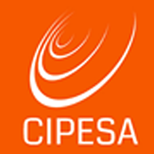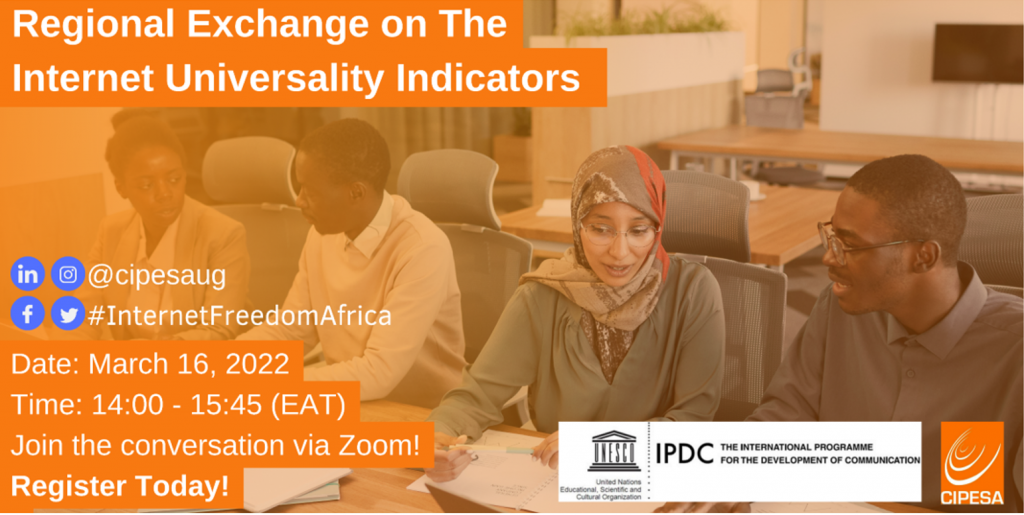Online Event |
On March 16, 2022, the Collaboration on International ICT Policy for East and Southern Africa (CIPESA) in partnership with the United Nations Educational, Scientific and Cultural Organisation (UNESCO) will host a regional dialogue on the Internet Universality Indicators (IUI). The event will highlight lessons from IUI assessments conducted in Benin, Ethiopia, Ghana, Kenya, Niger and Senegal during 2021 in a bid to garner best practices in national assessments of media and internet ecosystems.
The event builds on CIPESA and UNESCO efforts on raising awareness about the intersection of access to information and application of the IUI initiated at World Press Freedom Day celebrations in 2018 and the same year’s Forum on Internet Freedom in Africa as part of the International Day for Universal Access to Information (IDUAI) celebrations held every September 28.
Evolution of the Internet Universality Indicators (IUIs)
In 2015, the 38th General Conference of UNESCO endorsed a new definition on the university of the internet based upon four principles – Rights, Openness, Accessibility to all and Multi-stakeholder participation- the ROAM principles. The four principles, against which the IUI are based outline a framework for assessment of national digital landscapes towards promoting the growth and evolution of the internet, and the achievement of the Sustainable Development Goals.
The addition of cross-cutting indicators in 2018 resulted in the ROAM-X Indicator framework comprising of 303 indicators that assess the extent to which national stakeholders, including governments, businesses and civil society, comply with the ROAM principles.
Back in 2008 the UNESCO International Programme for the Development of Communication (IPDC) endorsed the Media Development Indicators (MDI) which serve to assess the overall environment for media development in a country. Another IPDC assessment framework is the Journalist Safety Indicators (JSI) which serve to identify the actions that are taken by the various relevant stakeholders in promoting journalists’ safety and fighting impunity at national level.
Together, the IUI, MDI and JSI are important tools for reviewing internet and media ecosystems but fostering digital and strategic collaborations at national, regional and international levels.
Why the Indicators Are Relevant To The Internet Governance Community and Actors in Africa
Despite growing diversity in Africa’s media and digital landscape, plurality, neutrality, safety, and freedom of expression face continued affronts. The sector is also grappling with concerns around data privacy, internet access affordability, content moderation and surveillance, among others.
These factors are causing the media in several countries to fall short of the MDIs and the JSIs, while increasing regressive shifts in internet access and use by citizens and the media alike are also affecting the performance of states on the IUIs. However, indepth, structured assessment can better reveal the extent to which states are actually performing and allow for achieving evidence-based policy and practice reform.
Way Forward
Through hosting of the regional exchange, it is hoped that more actors will pick interest utilising the indicators to inform advocacy for media freedom and digital rights
Register for the webinar here.
Next Countries of Interest
Following on from the webinar, in-country training sessions on the indicators will be conducted in Cameroon, Somalia, Namibia, Malawi and Uganda. To get involved send an email to [email protected].

